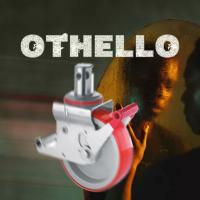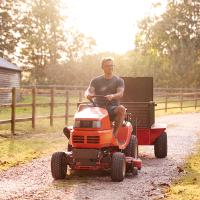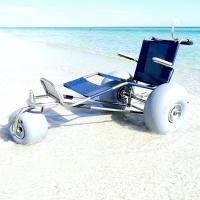
Castors and Wheels move a National Collection at the V&A

It was with great interest I read a Tweet from the Victoria and Albert Museum recently regarding moving a National Collection. For those of you in the know, the Victoria and Albert Museum holds one of the most important collections of textiles and fashions in the world.
It was with great interest I read a Tweet from the Victoria and Albert Museum recently regarding moving a National Collection. For those of you in the know, the Victoria and Albert Museum holds one of the most important collections of textiles and fashions in the world. Founded in 1852, the museum covers twelve acres and has over one hundred and forty five galleries. The collections span an impressive time line of over five thousand years. In recent years the museum has undergone a redevelopment and has opened up a new Clothworkers centre based in Blythe House, Kensington Olympia. This new facility will hold the extensive fashion and textile collection under one roof, and will provide state of the art storage and long term care for the delicate collections. But the Victoria and Albert museum were faced with a problem. What was the best way to move such a vast and often delicate priceless collection?
Back in February 2011 some fashion and textile galleries closed to allow the start of the relocation process. But it’s not just is what on display that needs careful relocation, but also the thousands of items in storage, as only a small percentage are on display at any one time. With over eighty five thousand items to consider, the movement really was a mammoth task. A task made even more impossible without the use of castors and wheels and specially designed hanging rails.
Many of the collections displayed in the Victoria and Albert Galleries have been in situ since the 1950’s and one of the first problems the team faced was to carefully clean the textiles prior to relocation. Over sixty years of dust on priceless textiles and rugs requires very careful vacuuming. Back in the 1950s the museum teams hung textiles in galleries from large wooden steps on wheels and castors. Today the equipment is more modern. Platforms on scaffolding frames, with special castors enables the restoration team and cleaning team to have safe access to the textiles that are high above the ground, without risk to health and safety, or textile damage.
Many museums use non marking rubber castors for their trolley wheels, as often displays are relocated all around the museum site. What museums do not want, are marks left on their floors, or dents in their carpets. Choosing the right castors and wheels for the job has become increasingly important. The Victoria and Albert museum was no exception. Ensuring the castors and wheels on their restoration and cleaning platforms were not only non-marking, but also supplied with brakes. Braked castors on the platform ensured the restorer could be positioned in the right place, and felt secure that the platform wouldn’t move. Imperative to prevent any textile or fabric restoring and cleaning accidents!
Once cleaned and vacuumed the textiles were unhooked from their hanging position and carefully rolled for relocation. Once again platforms on castors have been used to rehang the materials in their new home, this time behind a laminated screen for added protection. The new Clothworkers museum will open later this year for the millions of visitors to enjoy.










